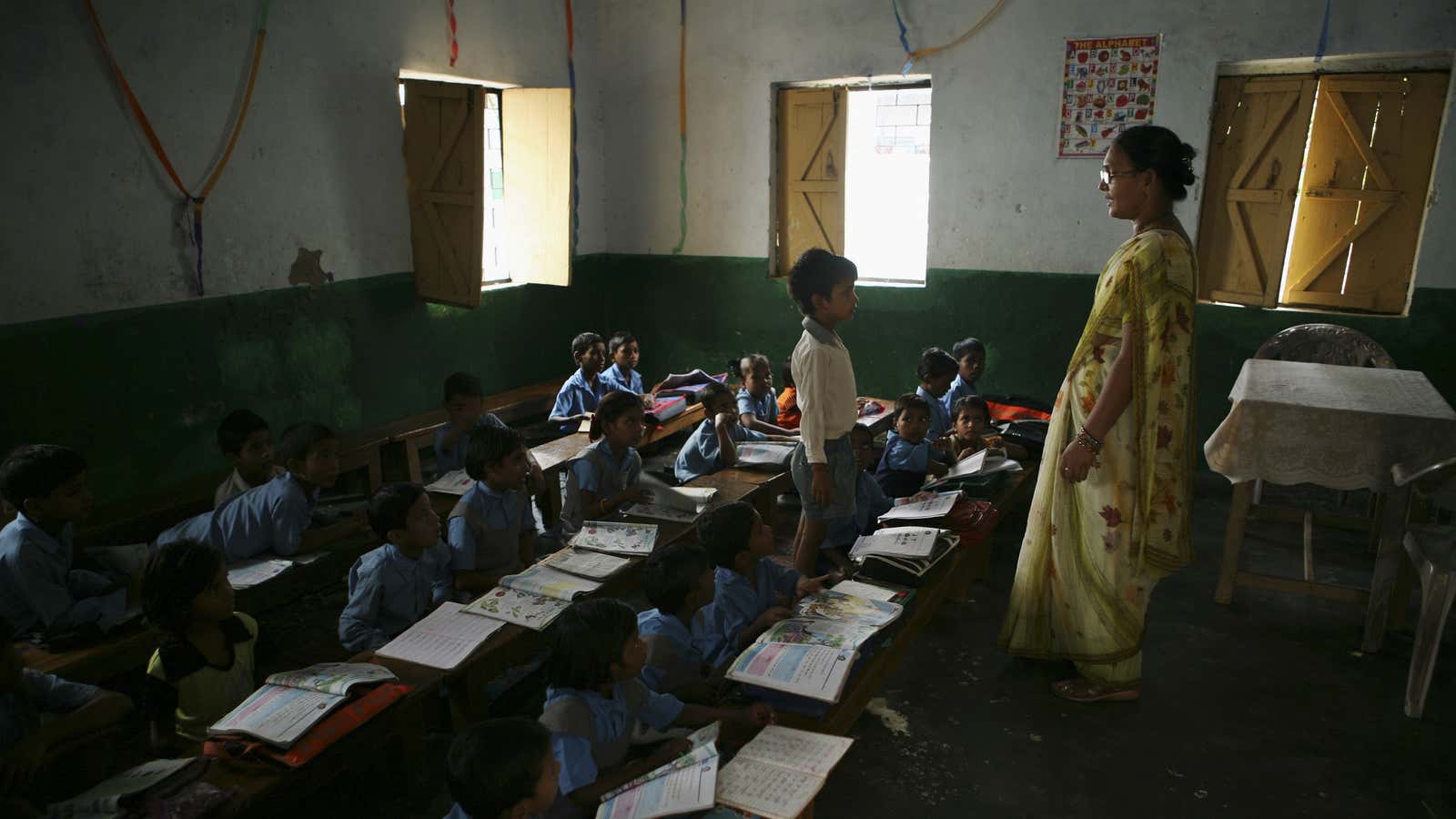The Indian education system is plagued by teacher absenteeism. A recent news report illustrates how ridiculous the problem has gotten: a teacher from Madhya Pradesh has been absent for 23 of the last 24 years in her long “career”.
A new study led by Karthik Muralidharan of University of California, San Diego, pegs the fiscal cost of such teacher absence to more than $1.5 billion per year.
Indeed, the Indian government has spent massively on primary education, namely the Sarva Shiksha Abhiyan, which was financed by a special education tax. But improving infrastructure and teacher quality have been the main goals of this program. The study points out that if teachers don’t even show up to work, all these efforts are in vain. Since teacher salaries are the largest component of education spending, high levels of teacher absence means considerable waste of public funds.
According to a World Bank study based on unannounced visits to government schools, 25% of teachers were absent from school, and only about half were teaching. Absence rates varied from 15% in Maharashtra to 42% in Jharkhand. The study also found that salary is not the determinant of teacher absence—the more educated and experienced teachers who are paid more are as frequently absent as contract teachers who are paid less.
Still, there are ways you can reduce absenteeism.
Research suggests that providing daily incentive to work (i.e. cash) is the best way to get teachers to attend schools regularly. The World Bank study suggests teachers are less likely to be absent at schools that have been inspected recently, that have better infrastructure, and that are closer to a paved road.
A 2010 study conducted by MIT shows that teacher absence fell by 21 percentage points in India when attendance of teachers was monitored daily by cameras and were paid according to the actual number of days they were present.
